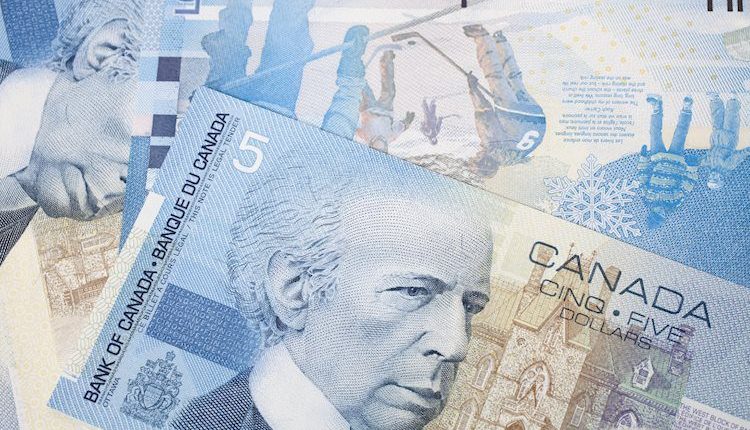Here is what you need to know on Thursday, November 21:
The US Dollar (USD) Index stays in a consolidation phase near 106.50 after closing in positive territory on Wednesday. The US economic calendar will feature weekly Initial Jobless Claims data alongside Existing Home Sales figures for October. Additionally, the Federal Reserve (Fed) Bank of Philadelphia and Kansas City will release regional manufacturing surveys for November.
US Dollar PRICE This week
The table below shows the percentage change of US Dollar (USD) against listed major currencies this week. US Dollar was the strongest against the Japanese Yen.
| USD | EUR | GBP | JPY | CAD | AUD | NZD | CHF | |
|---|---|---|---|---|---|---|---|---|
| USD | -0.04% | -0.24% | 0.40% | -0.86% | -0.82% | -0.03% | -0.60% | |
| EUR | 0.04% | -0.03% | 0.56% | -0.71% | -0.64% | 0.14% | -0.43% | |
| GBP | 0.24% | 0.03% | 0.61% | -0.67% | -0.61% | 0.14% | -0.40% | |
| JPY | -0.40% | -0.56% | -0.61% | -1.27% | -1.16% | -0.39% | -0.91% | |
| CAD | 0.86% | 0.71% | 0.67% | 1.27% | 0.06% | 0.82% | 0.28% | |
| AUD | 0.82% | 0.64% | 0.61% | 1.16% | -0.06% | 0.76% | 0.22% | |
| NZD | 0.03% | -0.14% | -0.14% | 0.39% | -0.82% | -0.76% | -0.53% | |
| CHF | 0.60% | 0.43% | 0.40% | 0.91% | -0.28% | -0.22% | 0.53% |
The heat map shows percentage changes of major currencies against each other. The base currency is picked from the left column, while the quote currency is picked from the top row. For example, if you pick the US Dollar from the left column and move along the horizontal line to the Japanese Yen, the percentage change displayed in the box will represent USD (base)/JPY (quote).
The cautious market mood and the modest increase seen in US Treasury bond yields helped the USD stay resilient against its major rivals on Wednesday. Early Thursday, the benchmark 10-year US Treasury bond yield holds steady at around 4.4% and US stock index futures trade mixed. In addition to macroeconomic data releases from the US, comments from Fed policymakers will be watched closely by market participants. Cleveland Fed President Beth Hammack, Chicago Fed President Austan Goolsbee and Kansas City Fed President Jeffrey Schmid will be delivering speeches during the American trading hours.
Bank of Japan Governor Kazuo Ueda reiterated on Thursday that they will decide on the monetary policy on a meeting-by-meeting basis. “We do seriously take into account exchange-rate movements in forming our economic and inflation outlook, including the question of what’s causing the exchange-rate changes that are taking place at the moment,” Ueda further explained. After rising 0.5% on Wednesday, USD/JPY stays under bearish pressure early Thursday and was last seen trading below 155.00.
EUR/USD seems to have entered a consolidation phase at around 1.0550 after closing in negative territory on Wednesday. The European Commission will publish preliminary Consumer Confidence data for November later in the session.
Gold posted gains on Wednesday and extended its winning streak into a third consecutive day. XAU/USD continues to edge higher in the European morning on Thursday and was last seen trading slightly above $2,660.
After declining sharply on Monday and Tuesday, USD/CAD found a foothold and posted small gains on Wednesday. The pair fluctuates in a narrow range above 1.3950 to start the European session. Statistics Canada will publish New Housing Price Index data for October later in the day.
GBP/USD failed to benefit from strong inflation readings from the UK and posted small losses on Wednesday. The pair stays relatively quiet and moves up and down in a narrow channel near 1.2650 early Thursday.
Fed FAQs
Monetary policy in the US is shaped by the Federal Reserve (Fed). The Fed has two mandates: to achieve price stability and foster full employment. Its primary tool to achieve these goals is by adjusting interest rates. When prices are rising too quickly and inflation is above the Fed’s 2% target, it raises interest rates, increasing borrowing costs throughout the economy. This results in a stronger US Dollar (USD) as it makes the US a more attractive place for international investors to park their money. When inflation falls below 2% or the Unemployment Rate is too high, the Fed may lower interest rates to encourage borrowing, which weighs on the Greenback.
The Federal Reserve (Fed) holds eight policy meetings a year, where the Federal Open Market Committee (FOMC) assesses economic conditions and makes monetary policy decisions. The FOMC is attended by twelve Fed officials – the seven members of the Board of Governors, the president of the Federal Reserve Bank of New York, and four of the remaining eleven regional Reserve Bank presidents, who serve one-year terms on a rotating basis.
In extreme situations, the Federal Reserve may resort to a policy named Quantitative Easing (QE). QE is the process by which the Fed substantially increases the flow of credit in a stuck financial system. It is a non-standard policy measure used during crises or when inflation is extremely low. It was the Fed’s weapon of choice during the Great Financial Crisis in 2008. It involves the Fed printing more Dollars and using them to buy high grade bonds from financial institutions. QE usually weakens the US Dollar.
Quantitative tightening (QT) is the reverse process of QE, whereby the Federal Reserve stops buying bonds from financial institutions and does not reinvest the principal from the bonds it holds maturing, to purchase new bonds. It is usually positive for the value of the US Dollar.
Read the full article here

